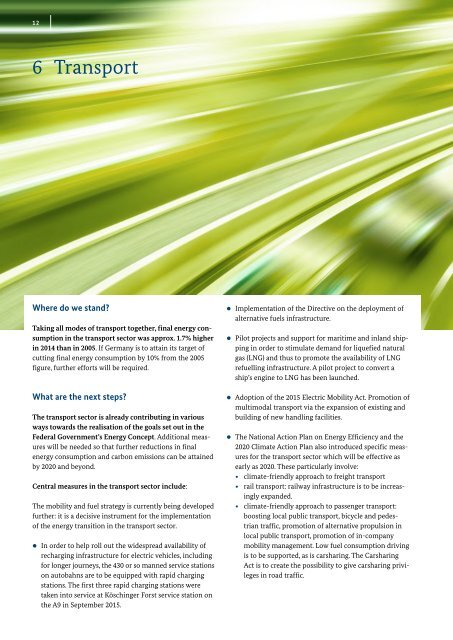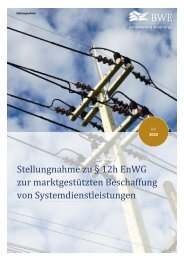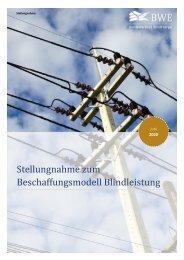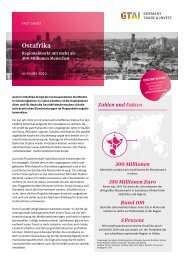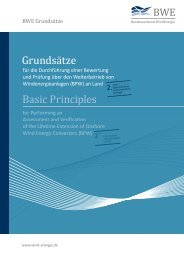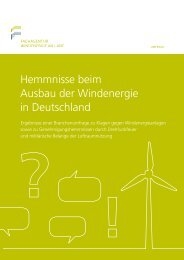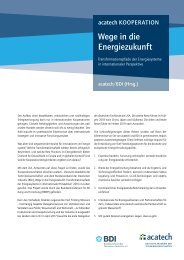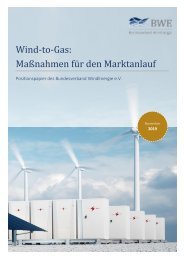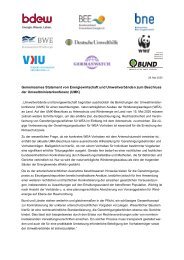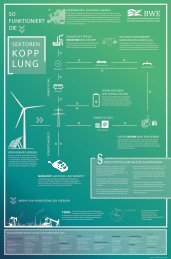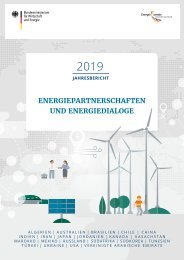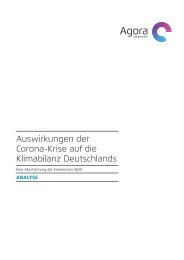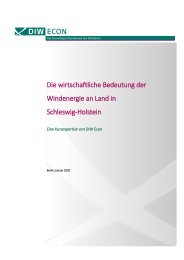vierter-monitoring-bericht-energie-der-zukunft-englische-kurzfassung
You also want an ePaper? Increase the reach of your titles
YUMPU automatically turns print PDFs into web optimized ePapers that Google loves.
12<br />
6 Transport<br />
Where do we stand?<br />
Taking all modes of transport together, final energy consumption<br />
in the transport sector was approx. 1.7% higher<br />
in 2014 than in 2005. If Germany is to attain its target of<br />
cutting final energy consumption by 10% from the 2005<br />
figure, further efforts will be required.<br />
What are the next steps?<br />
The transport sector is already contributing in various<br />
ways towards the realisation of the goals set out in the<br />
Fe<strong>der</strong>al Government’s Energy Concept. Additional measures<br />
will be needed so that further reductions in final<br />
energy consumption and carbon emissions can be attained<br />
by 2020 and beyond.<br />
Central measures in the transport sector include:<br />
The mobility and fuel strategy is currently being developed<br />
further: it is a decisive instrument for the implementation<br />
of the energy transition in the transport sector.<br />
• zIn or<strong>der</strong> to help roll out the widespread availability of<br />
recharging infrastructure for electric vehicles, including<br />
for longer journeys, the 430 or so manned service stations<br />
on autobahns are to be equipped with rapid charging<br />
stations. The first three rapid charging stations were<br />
taken into service at Köschinger Forst service station on<br />
the A9 in September 2015.<br />
• zImplementation of the Directive on the deployment of<br />
alternative fuels infrastructure.<br />
• zPilot projects and support for maritime and inland shipping<br />
in or<strong>der</strong> to stimulate demand for liquefied natural<br />
gas (LNG) and thus to promote the availability of LNG<br />
refuelling infrastructure. A pilot project to convert a<br />
ship’s engine to LNG has been launched.<br />
• zAdoption of the 2015 Electric Mobility Act. Promotion of<br />
multimodal transport via the expansion of existing and<br />
building of new handling facilities.<br />
• zThe National Action Plan on Energy Efficiency and the<br />
2020 Climate Action Plan also introduced specific measures<br />
for the transport sector which will be effective as<br />
early as 2020. These particularly involve:<br />
• yclimate-friendly approach to freight transport<br />
• yrail transport: railway infrastructure is to be increasingly<br />
expanded.<br />
• yclimate-friendly approach to passenger transport:<br />
boosting local public transport, bicycle and pedestrian<br />
traffic, promotion of alternative propulsion in<br />
local public transport, promotion of in-company<br />
mobility management. Low fuel consumption driving<br />
is to be supported, as is carsharing. The Carsharing<br />
Act is to create the possibility to give carsharing privileges<br />
in road traffic.


